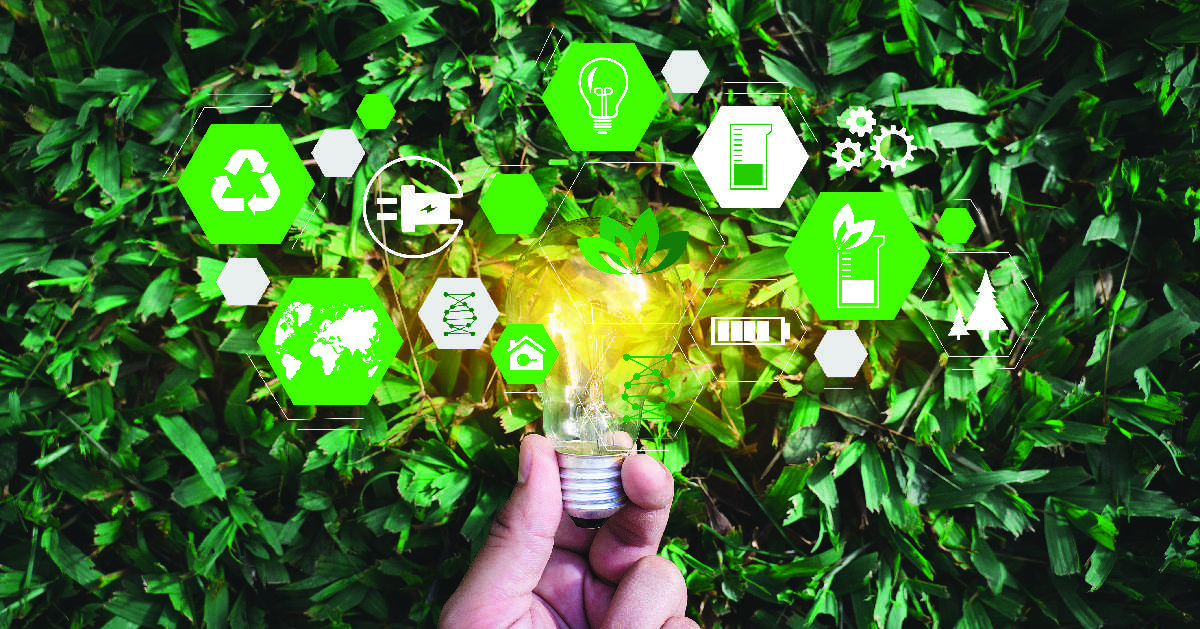
Kena Vasquez is DT Global’s Senior Program Manager and Senior Sustainability Advisor, providing project management and oversight for projects under our Environment & Infrastructure practice area. This includes USAID’s Ready Project, a climate change finance project in the Pacific Island Countries. Recently, she conducted an assessment of DT Global’s carbon footprint in our US office, which she hopes can be developed further and replicated across our EU and APAC offices, as well as piloted, as appropriate, at field offices across the globe. Here, we spoke with Ms. Vasquez about why and how she undertook this assessment, and what we can all learn from her work.
More than ever, we are hearing about triple bottom line considerations with companies recognizing that the integration of Environmental, Social, and Governance (ESG) principles—criteria used to help investors find companies that match their values—is essential to long-term value creation and sustainable organizational growth. Particularly, ESG principles have been called upon by top investors as prerequisites for investment, which pressures companies to integrate ESG meaningfully into their business models and strategies. Investors are increasingly interested in seeing evidence of proper ESG integration, and so are society and policymakers.
While the international development sector is not under pressure from outside investors as other sectors are (e.g., infrastructure or manufacturing sectors) our line of work does not make us immune to environmental, social, and governance standards. I believe DT Global has done an outstanding job of coming together as an organization guided by corporate values that align with social responsibility and inclusive corporate governance. Equally important is our commitment to environmental sustainability. While we do strive to preserve natural resources and build resilience to climate change in the communities we serve globally, we also have the opportunity to act at the corporate level and reflect our commitment to environmental sustainability in the way we do business.
To know where to begin with environmental sustainability, it is fundamental first to understand our impact on the environment. For that reason, I thought it was essential to start by measuring our carbon emissions, learn about the main drivers of these emissions, and raise awareness with all our DT Global staff in the US on how we contribute to emissions. Based on these findings, I identified and prioritized initial actions to reduce our carbon footprint in the US—which could inform corporate sustainability policy recommendations for DT Global overall.
To estimate DT Global’s carbon footprint in the United States, I followed the Greenhouse Gas Protocol guidelines and referenced The Climate Registry General reporting protocol. Both are official standards for voluntary greenhouse gas (GHG) reporting and set corporate accounting and measurement standards across industries. These tools continue to evolve and are updated every so often to reflect changes in GHG calculation methods.
The process is very data-driven, and the hardest part was to gather data across all activities in the US office. We focused data-gathering efforts on activities that I thought may account for the most significant amount of carbon emissions. These included international travel data, employee commuting data, electricity use data, waste and recycling, and some purchasing data. I stumbled into some data gaps along the way—for instance, suppliers for office procurements often lack the data to properly calculate emissions across the supply chain—but it is common practice to make educated guesses as long as you properly document estimations and assumptions. These gaps also showed us areas we can focus on in future years, such as working with suppliers to begin to collect data on emissions.

This exercise's goal was to arrive at a realistic business as usual emissions estimate for calendar year 2020. Because this year is not business as usual for anyone due to the COVID-19 pandemic, I used actual data from January through April of this year, and historical data from 2019 to project emissions for the remainder of 2020. It will be interesting to see how our carbon footprint may have decreased when we update our 2020 emission estimates with actuals. I look forward to updating our emissions data and sharing it at the end of the year.
The most revealing part of this exercise was to find that Scope 3 emissions account for the largest source of DT Global emissions from its operations in the US. Scope 3 emissions are indirect emissions from activities and assets not owned or controlled by DT Global and include things like employee commuting and international travel. Scope 2 emissions, which are indirect emissions controlled by DT Global such as purchased electricity and heat, came in second and were significantly less than Scope 3 emissions.

Identifying actions to offset our carbon footprint was the most exciting part of the process. I found that there are many things we can do as an organization to reduce our carbon footprint and that there is significant potential to become a carbon neutral company. I prioritized and presented these actions based on the following factors: Effort, Cost, GHG Impact, Brand Impact, and Employee Sentiment. Surprisingly, some of the actions that lead to the largest reduction of carbon emissions will require the least effort and cost while significantly improving employee sentiment. This assessment also uncovered opportunity areas for environmental sustainability at the project field office level. I look forward to updating my findings with end of year data and continuing to share what I learn across our global offices to help shape how DT Global addresses sustainability and environmental impact moving forward.